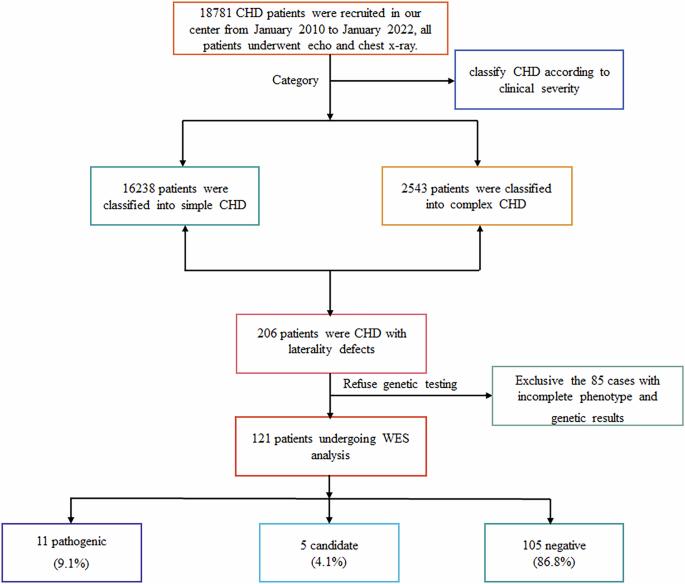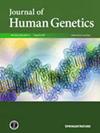The prevalence of laterality defects in patients with congenital heart disease
IF 2.5
3区 生物学
Q2 GENETICS & HEREDITY
引用次数: 0
Abstract
Congenital heart disease (CHD) affects approximately 1% of liveborn infants. Among primary ciliary dyskinesia (PCD) cases, about 50% present with situs inversus totalis, and 6.3% have heterotaxy with CHD. The incidence of CHD is significantly higher in heterotaxy patients compared to the general population (57% vs. 1%). However, comprehensive studies on CHD related to laterality defects are still limited. In this study, we retrospectively analyzed 18,781 CHD patients to determine the prevalence of laterality defects. To evaluate the association between specific complex CHD phenotypes and laterality defects, we utilized a binary logistic regression model. Additionally, we performed whole-exome sequencing (WES) on 121 CHD patients with laterality defects. The results showed that 1.1% of CHD patients had laterality defects (206/18,781), with 0.4% presenting as situs inversus totalis and 0.7% as situs ambiguus. The prevalence of laterality defects was higher in complex CHD cases (5.4%) compared to simple CHD (0.4%). Notably, single atrium with single ventricle (SA+SV) was strongly associated with laterality defects (OR = 48.23, p < 0.001). Among the 121 CHD patients with situs abnormalities, WES identified pathogenic gene variants in 13.2%, with 9.1% harboring known pathogenic genes (ZIC3, NODAL, NKX2-5, GDF1, MMP21, PKD1L1, CCDC151, DNAAF4, LRRC56) and 4.1% exhibiting variants in candidate genes (FMNL3, C1ORF127, CFAP157, C10ORF107, MYO1D). This study revealed both established and novel gene candidates, contributing to our understanding of the genetic basis of laterality defects in CHD.

先天性心脏病患者侧侧缺陷的患病率。
先天性心脏病(CHD)影响约1%的活产婴儿。在原发性纤毛运动障碍(PCD)病例中,约有50%的患者存在完全相反的位置,6.3%的患者存在冠心病的异位。与一般人群相比,异血型患者的冠心病发病率明显更高(57%对1%)。然而,关于侧位缺损与冠心病相关的全面研究仍然有限。在这项研究中,我们回顾性分析了18781例冠心病患者,以确定侧侧缺损的患病率。为了评估特定复杂冠心病表型与侧偏性缺陷之间的关系,我们使用了二元逻辑回归模型。此外,我们对121例侧侧缺陷的冠心病患者进行了全外显子组测序(WES)。结果显示,1.1%的冠心病患者存在侧位缺损(206/ 18781),其中0.4%表现为完全性倒位,0.7%表现为模糊性位。与单纯性冠心病(0.4%)相比,复杂性冠心病(5.4%)的侧边缺损发生率更高。值得注意的是,单心房合并单心室(SA+SV)与侧侧缺损密切相关(OR = 48.23, p
本文章由计算机程序翻译,如有差异,请以英文原文为准。
求助全文
约1分钟内获得全文
求助全文
来源期刊

Journal of Human Genetics
生物-遗传学
CiteScore
7.20
自引率
0.00%
发文量
101
审稿时长
4-8 weeks
期刊介绍:
The Journal of Human Genetics is an international journal publishing articles on human genetics, including medical genetics and human genome analysis. It covers all aspects of human genetics, including molecular genetics, clinical genetics, behavioral genetics, immunogenetics, pharmacogenomics, population genetics, functional genomics, epigenetics, genetic counseling and gene therapy.
Articles on the following areas are especially welcome: genetic factors of monogenic and complex disorders, genome-wide association studies, genetic epidemiology, cancer genetics, personal genomics, genotype-phenotype relationships and genome diversity.
 求助内容:
求助内容: 应助结果提醒方式:
应助结果提醒方式:


